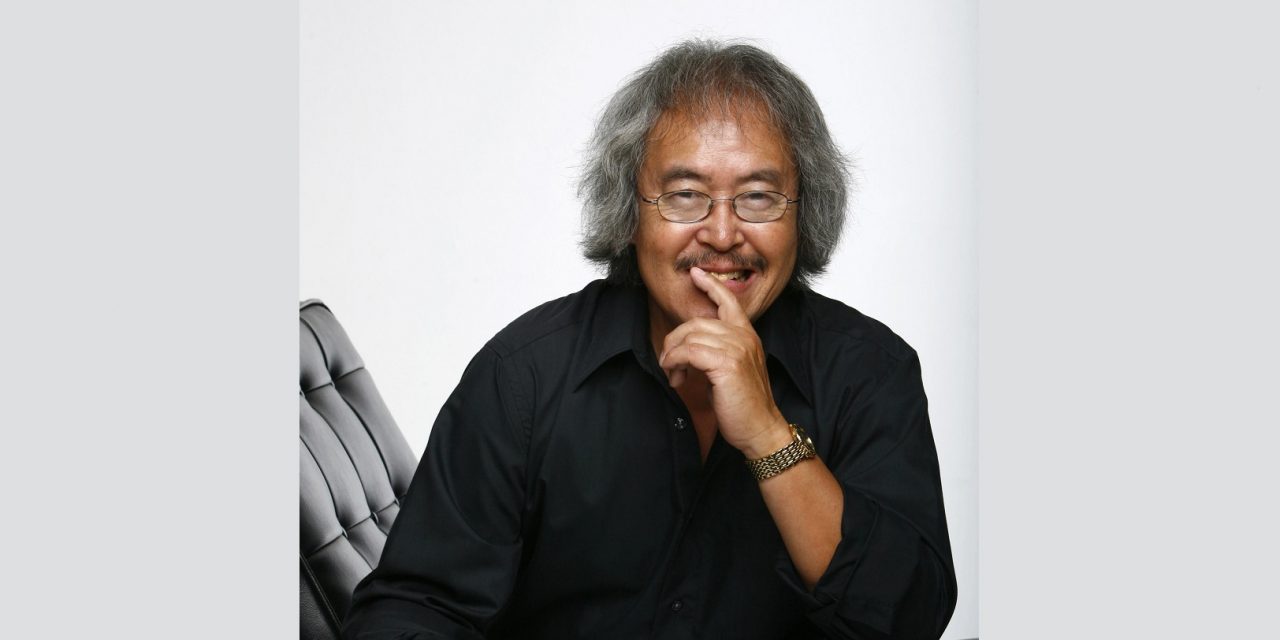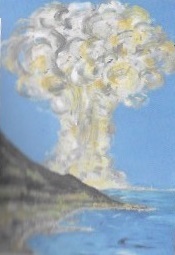PART I:
As I gaze at the picture of the young Takashi Hamagaki, “Hama,” as he’s lovingly known in the dance world, I realize even though I’ve known this man since 1968, I have known only moments of this stoic, kind and loyal warrior of dance. I realize, as time gets away from us both, it is my journey to discover and record the history and adventures of my friend who never gave up on his love and contribution to dance, his loyalty to his friends and mentors and gratitude to his adopted country. The more questions I asked, the more it whetted my appetite to know about him. So, on a Sunday in January 2021 after many months of hiding away from the Covid 19 pandemic, I sat down with Hama (10 feet away, of course) and he revealed, layer by layer, his dramatic and powerful life.
I first met him in his twenties in New York, we did a Broadway Show called “The Education of Hyman Kaplan,” choreographed by mentor and friend Jaime Rogers and directed by George Abbott. Hama was an impish man/boy, a brilliant dancer, with the energy of a young colt. He was joyful and playful, and hardly ever spoke, and definitely not about his life before our time in the rehearsal hall or onstage.
Now at age 82 he looks back on those life-changing years and begins unveiling his early experiences in Japan during WWII. It was before the A-bomb was dropped on Hiroshima and Nagasaki that he remembers the sacrifices and the cruelty of the war. He leans in and says nearly in a whisper, “In a war, regular people always suffer…you must ration even your rice, and water. I was the second to the last of seven brothers and sisters. The government wanted everyone to have many children.
Joanne: Why, with such devastation and poverty would they ask that of their people?
Hama: …For the War Effort!
But in spite of all that, mother was always kind and loving and cared about giving everything to her kids; and my father was an honest simple guy who worked so hard. And even though we hardly had enough food to eat, (I don’t remember my mother eating at all or… not very much) they always protected us. They raised seven kids under these circumstances. My mother knew suffering. She experienced three wars in her lifetime with Russia, China, Korea and then came WWII. She passed away from a stroke at only 56 years old. I’m sure she was exhausted.
Joanne: Oh, so difficult and heartbreaking. What incredible parents that they found a way to feed all of you. Could you give me some idea of how they did that?
Hama: I remember almost daily my mother would move from shrine to Buddhist Shrine to find help for her family.
It must have been very hard. The whole country was so poor, but I watched my parents be independent. My mother and father always provided for us somehow. Though Tokyo was a big town, you had to rely on the countryside for food. They never delivered food into Tokyo, you had to go far outside to get it. My father would take a train to exchange whatever we had for rice or vegetables, but the food didn’t last very long, so he would have to go back again and again. If you had money, you could buy food. But some had to trade their clothing and shoes because they had nothing. Not only us, but all the people in the town. At that time, people were so poor they couldn’t feed their own kids…so they had to give them away. He looks up, taking a break from his memories, and says cryptically, “Strong woman with no choice.”
Joanne: How did you survive, being so young and going through so much?
Hama: Well, even as a little boy, I was independent. One day my mother took me by the hand and brought me to temple because she wanted me to learn Buddhist praying. I looked around at the dirt floor, a bunch of people sitting there making humming sounds, lots of smoke, incense. Then they started chanting. I stood up! Seeing all those people doing the same thing, I said to myself, I am not going to be one of them. Even at that time, I saw people praying and praying, not doing anything. I knew I needed to do something not just sit around praying.
Joanne: You definitely had your own mind for such a young man. Living in a country at war with so little, how did they convince people to continue fighting?
Hama: At the time the Japanese military took over the government telling us “We are fighting for the Emperor.” We had only one tiny radio and all reports came through the military government, so radio broadcasts reported that Japan was winning. And we believed it. But the government always lied to us. We knew nothing.
During the war, lights had to be off at five o’clock. In the middle of the night, the police would come. If the dog started barking, someone would say “make him shut up or we’re going to kill him.” So that family would have to figure something out… or kill their dog.
I even remember as a little boy, standing on the roof and watching as the planes started Carpet-bombing nonstop across the middle of Tokyo, it killed many people…about 10,000.
A few days later, they dropped the atomic bomb on Hiroshima and Nagasaki. In total about 300,000 people died.
We didn’t have any resources against America, no ammunition, no way to fight back. America knew it, but they knew they had to finish the war.
Joanne: With so much devastation! It’s difficult to rationalize any of this.
Hama: Yes, well because Japan’s government was so corrupt, I didn’t hate America, just the opposite, it was a relief because then democracy came and we could work hard to get ahead. No more atomic bombs. We didn’t want any kind of war anymore. The killing stopped. It was a big relief because everything was under a new government control. We didn’t know what it was going to be like, but after you have faced so much trouble, the spirit rebounds. You feel more alive, you feel your life transforming, rejuvenating your energy. After the war we were struggling, but happy. I didn’t have any bitterness; we saw the kind of power the U.S. had. So, there was excitement at the end of the war. It was a relief and because democracy, we could work hard to get ahead.
The war ended in 1945 when I was only seven and right afterwards I started elementary school. My brothers and sisters were all in school at the same time with three years difference between each child. I don’t know how my parents fed us and gave us an education then. Sometimes I had only water to drink.
My father always worked hard so after the war he started working at the American Base. He was a good driver and mechanic. He studied by himself then got a job sorting the mail. I remember him as very strong spiritually and physically. Every night when he came home from work, he would give me money to buy him a glass of sake. I would sit next to him watching him sip a little. One of those nights, when I was around 10 years old, I asked him, “Daddy, what should I be when I grow up?” He thought for a little while and then told me, “Anything you do is fine. But, whatever you do…” and he held up his finger, “ be Number One. Don’t compare yourself to anyone else. Reach your potential. Be unique. Be the best.” Those words to me were so precious. Going thru so many hardships, my mind was looking for life – it took me 19 years to find out what I was going to do and those words stuck with me my whole life. I appreciated them and I would recall them when I went through the hard times in N.Y. I would remember those words of gold. Every time I go back to Japan and visit his grave, I thank him. His message meant so much to me….You don’t need to be a conqueror, just find your way, be good at it and be happy.
To visit the Hama Dance Center, click HERE.
Written by Joanne DiVito for LA Dance Chronicle.
Featured image: Hama – Photo by Michael Higgins












